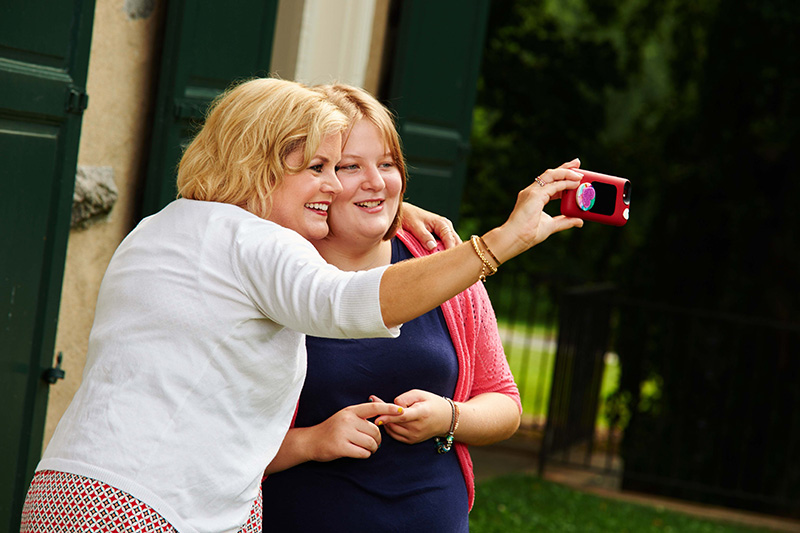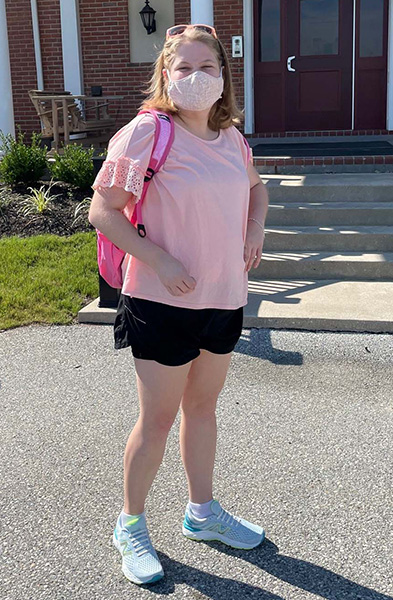Remember how it felt as a child before your first day of school? Perhaps you experienced butterflies in your stomach or loss of sleep the night before. You were excited to see your friends, but also nervous about what the new school year would bring. That is exactly how I am feeling about sending my daughter back to school.

Devereux National Director of Family Engagement Amy Kelly, MBA, MNM, whose 19-year-old daughter, Annie, has autism and intellectual and developmental disabilities, says she is helping her daughter transition back to school by talking about the upcoming school year and pointing out the positives.
While some children have already returned to in-person classes during COVID-19, others, like my 19-year-old daughter, Annie, will do so this fall after more than a year of remote learning. For Annie, who has autism, intellectual and developmental disabilities and limited verbal ability, the loss of the last year-plus of her school life has been challenging.
Regardless of the age of your child, or if they have already returned to in-person instruction, there are some things parents can do to help youth with special needs ensure a smooth transition back to school.
Talk about the upcoming school year: About a month before classes begin, talk with your child about going back to school. Use a calendar to count down the days together. Create excitement (even if you or your child are experiencing apprehension) and point out the positives by reminding your child, “You will get to see all of your friends and teachers again. They missed you!”
Create a social story: Social stories can help kids understand, and prepare for, certain situations by using visuals (e.g., photographs, drawings, written words). I created one for my daughter and included the following:
- Photo of Annie’s school and the month she will return
- Photos of Annie’s classmates and teachers with a note about how much they missed her
- Photos of Annie, her teachers and friends wearing face masks with a note reminding her that she will need to wear one during the school day
- Photos of Annie’s school bus and my car with a note telling her that she will travel to school the way she did before the pandemic
- Information about handwashing and hand sanitizing
- Photo of our family with a note reminding Annie that she will see us at the end of the school day

19-year-old, Annie Kelly, is getting ready to transition
back to school after more than a year of remote learning.
Talk about the pandemic: Regardless of what disability or level of impairment your child has, they understand when things are different. Using simple, short phrases, talk with your child about the pandemic and where things stand in your area regarding face mask guidelines and restrictions. Use the level of communication your child understands and emphasize that they will not need to worry about getting sick if they follow the rules and practice good hygiene by covering their nose and mouth if they cough or sneeze and frequently washing or sanitizing their hands.
Get back on schedule: During summer break, routines change. A few weeks before school starts, get your bedtime routine back on track. Make adjustments in 15-minute increments every other day (when going to bed and waking up) and eat dinner together as a family at the same time you would during the school week.
While much has changed since many students were last in the classroom, with a little preparation, you can help your child thrive this school year.
About Amy Kelly …
Amy Kelly, MBA, MNM, is the mother to Danny, Annie and Ryan. Annie is diagnosed with moderate to severe autism, verbal apraxia, intellectual and developmental disabilities and general anxiety disorder. Amy is the National Director of Family Engagement for Devereux Advanced Behavioral Health, one of the nation’s oldest and largest nonprofit providers of behavioral healthcare, and serves as a family representative on several special needs boards in the community, locally and nationally. In addition, she participates with other patients and families in efforts supported by the American Board of Pediatrics Foundation and the Autism Speaks Autism Treatment Network to address children with special needs and the importance of quality care.





[…] https://www.autismspectrumnews.org/managing-back-to-school-jitters-tips-to-help-children-with-special-ne… […]